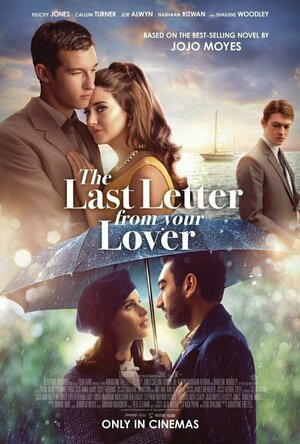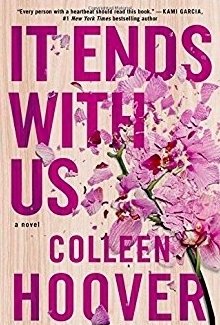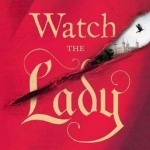
Watch the Lady
Book
The Queen's God Daughter. Her Most Trusted Maid. Adultress. Enemy Of The State. Who is The Real...
Bob Mann (459 KP) rated The Last Letter from Your Lover (2021) in Movies
Aug 9, 2021
Positives:
- "They don't make them like this any more" the saying goes. This is a love story cum melodrama that is well told by director Augustine Frizzell, in only her second feature. The film zips backwards and forwards between different time periods, trusting the audience to keep up with where we are. The dialogue is suitably soupy for a film of this type, based on a Jojo Moyes book (who wrote "Me Before You", also well-filmed). I've seen a critic review in "The Times" where they mocked the sentimentality of the love letters: but part of me would love to say "OK - let's hear what you would have written"!
- The story ticks all the boxes to keep you engaged. Although never moved to tears, a scene towards the end of the movie certainly generated a lump in the throat.
- All the leads are great. Shailene Woodley has been a personal favourite actress since her amazing turn in "The Descendants". And she certainly doesn't disappoint here.
- The production design is lush, particularly with the 60's scenes of London and the Riviera (reminiscent for me of the recent remake of "Rebecca"). This is nicely brought out by the cinematography (by George Steel), with some of the scenes being 'hang on the wall' beautiful to look at.
- It's wonderful to see the late Ben Cross in the movie, and he gives an excellent and touching performance. Cross died of cancer in August 2020 at the age of just 72. This is probably not his last movie, since he was in another - "The Devil's Light" - currently in post-production. Such a sad loss to the industry.
Negatives:
- The movie tries to construct a love story in the 60's and one in the present day 2020's, contrasting the different rules and values at play. The 60's one works; the 20's one really didn't for me. Ellie comes across as a very unlikeable person. The contrast between the lack of communications in the 60's (waiting at a station, not sure if someone will turn up or not) and today's chat/SMS rich 'always on' world could perhaps have been brought out more. With my Dr Bob directorial hat on, I would have ditched the present-day love story entirely and focused in on two professional detectives uncovering the past together: not everything needs to involve love and sex.
- The film has a couple of rain sequences that are highly unconvincing. One Riviera in-car scene particularly made me chuckle. "TURN FIRE HOSE ON!" You can almost see the blue sky and people cavorting on the beach behind them!
Summary Thoughts on "The Last Letter from Your Lover": There are actually few films around these days that feature love stories outside the teenage years. This is an 'old-fashioned' film that will appeal to an older age group, looking for style, romance and escapism. It reminded me in turns of movies like "The Two Faces of January" and "The Age of Adeline" in its mood and presentation. I'm probably not the target audience for this movie and I really enjoyed it. But the illustrious Mrs Movie Man probably is. And she declared that she absolutely loved it!
Ignore the sniffy newspaper and ex-newspaper critics. I'd declare this to be a "recommended".
(For the full graphical review, please check out One Mann's Movies on the web, Facebook or Tiktok. Thanks.)
Heather Cranmer (2721 KP) rated Five Total Strangers in Books
Dec 24, 2020
High school senior Mira is trying to get home to her mother for Christmas. However, a severe snowstorm means that Mira's connecting flight has been cancelled until further notice. Desperate to get home to her mother, Mira decides to take a chance with the college girl who was sat beside her on the plane named Harper. Somehow, Harper manages to snag a rental car, but there are three other people besides Harper and Mira. When personal items start going missing and strange things begin happening, Mira wonders who can she actually trust that's sharing a car with her and just what is the end game.
I loved, loved, loved the plot. It sounds like it's such a simplistic storyline with just five people travelling together, but it was so much more than that. It's a mystery, horror, thriller, and suspense story all in one which are all of my favorite genres. The pacing was absolutely spot on, and I found myself closely following each word on the page to find out what would happen next. I felt like I was one of the people in the car. I started getting paranoid about who to trust in the car. There were a couple of plot twists which were interesting. I never could figure out who was the sender of the letters to Mira until it was revealed at the end, and I wasn't sure who the saboteur was either until the end. There were many times I realized I was holding my breath in anticipation while reading Five Total Strangers. I pretty much read the whole book in one sitting. The only thing that was a small disappointment was the ending. It didn't feel like it was rushed, but I felt like there could have been a bit more information. I would have loved to know what the other occupants of the car got up to after their disastrous trip. There were no cliffhangers though which I was grateful for.
I felt like the characters were fleshed out perfectly for Five Total Strangers. There isn't much backstory for Harper, Brecken, Kayla, and Josh besides little tidbits here and there, but that's what makes this book even better. It gives it more of a mysterious feel. I liked the book being in Mira's perspective. I felt like I was feeling everything right along with Mira. Even though she was only eighteen, she came across as much older. Sure, she still made some decisions with a teen brain, but for the most part, she did have a good head on her shoulders. I liked Harper, and I admired her bravado. However, I also liked the times she showed her human side and her vulnerability. I admired Josh and Brecken's desire to help out when things got really rough. I did love Kayla's dry humor peppered within the book. I would even go as far as saying she was my favorite character in Five Total Strangers.
Trigger warnings for Five Total Strangers include swearing, attempted murder, death, some violence, and some drug use.
All in all, Five Total Strangers is a fantastic read which will leave you guessing who to trust throughout the book. With a great set of characters and fantastic world building, this is not a book you want to miss. I would definitely recommend Five Total Strangers by Natalie D. Richards to those aged 15+ who are after a story that will captivate them the entire time.
Kristina (502 KP) rated It Ends With Us in Books
Dec 7, 2020
***Spoiler***
Naked truth?
I think a part of me still loves Ryle. I worried that he was too perfect in the beginning. I knew there had to be a flaw and I was scared Lily's mom's situation would have something to do with it. What I'm most scared about is the fact I kind of wanted Lily to forgive him and take him back. Because who knows, having a daughter could have knocked the abusive side of him right out. And, sure, she loved Atlas, but I felt like it could have blossomed into a mature, familial type love. I'm so very proud of Lily and the decision she made, especially because it was for little Emmy. But a part of me mourns the loss of Ryle. Because his pain was real, his regret was real. Still... No matter how sorry he was, as Lily stated, there is no excuse; she did what she had to do.
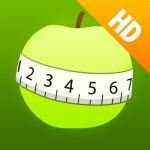
Food Diary and Calorie Tracker by MyNetDiary HD
Health & Fitness and Lifestyle
App
MyNetDiary is the easiest to use and most comprehensive food diary and calorie counter app on the...

Notes HD: Notes, Drawings
Productivity and Education
App
"Notes HD really is one of the most extensive apps in its class." - MakeUseOf Note taking app...
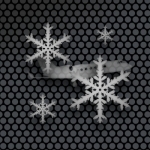
Winter OPS
Utilities and Productivity
App
Winter OPS is an Application for De-/Anti-Icing & SNOWTAM Decoding. The data is based on the AEA...
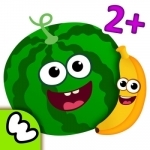
Learning Games 4 Kids Toddlers
Games and Education
App
Funny Food consists of 17 various educational games for your children. Funny Food addresses various...
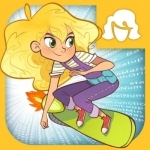
GoldieBlox: Adventures in Coding - The Rocket Cupcake Co.
Education and Entertainment
App
** Pay once and play forever! No in-app purchases! Never-ending puzzles! ** Attention, future...
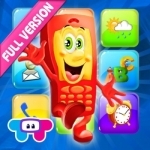
Phone for Play: Full Version
Education and Games
App
~~> The largest collection of fun educational activities in a single app! ~~> Top #1 Education app...
